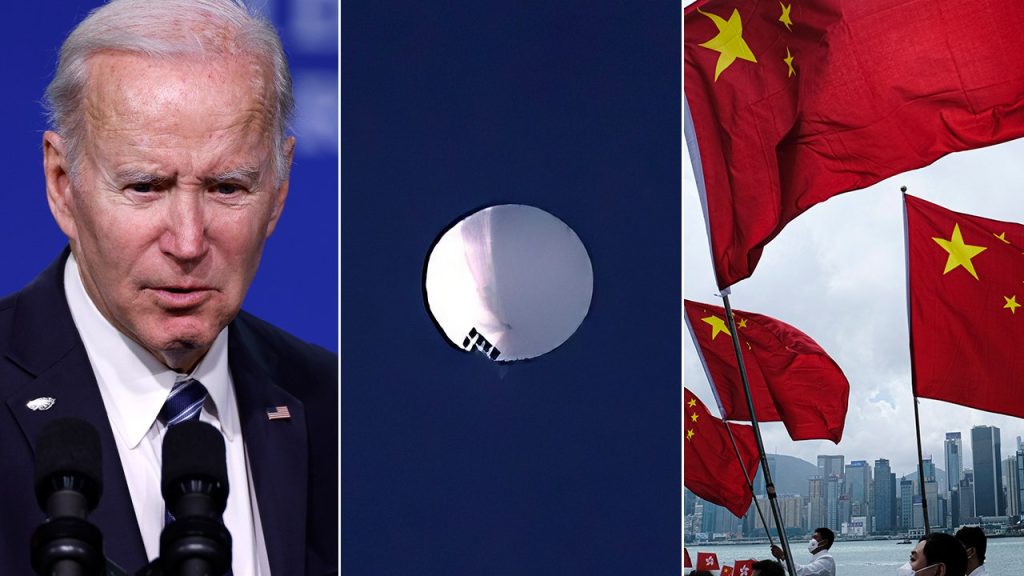In early 2023, the Biden administration faced a significant diplomatic crisis involving a Chinese spy balloon that traversed U.S. airspace. U.S. officials detected the balloon on January 28, and ultimately shot it down on February 4, leading to private discussions between U.S. State Department officials and their Chinese counterparts. These talks were aimed at mitigating the potential fallout from the incident, which raised pressing concerns about U.S.-China relations and national security implications.
| Article Subheadings |
|---|
| 1) Background of the Chinese Spy Balloon Incident |
| 2) Diplomatic Responses and Discussions |
| 3) The Decision to Shoot Down the Balloon |
| 4) Aftermath and National Security Concerns |
| 5) The Future of U.S.-China Relations |
Background of the Chinese Spy Balloon Incident
The Chinese spy balloon incident began on January 28, 2023, when U.S. officials detected an uncrewed balloon that had infiltrated American airspace. This balloon, identified by the Pentagon as a “high-altitude surveillance balloon,” raised significant alarm due to its purpose and its violation of U.S. sovereignty. The balloon was believed to be equipped with surveillance technology that was capable of monitoring sensitive military sites across the United States, according to multiple defense officials. The incident quickly garnered media attention and set the stage for diplomatic tensions between the United States and China, which have been on rocky ground in recent years.
Diplomatic Responses and Discussions
In response to the balloon’s presence, U.S. officials engaged in urgent diplomatic talks with representatives from China. Initial discussions began on February 1, 2023, led by Secretary of State Antony Blinken, who signaled the potential ramifications of making the balloon’s presence public. Internal State Department documents revealed that Blinken warned that disclosing the balloon could have “profound implications” for U.S.-China relations at a precarious time. The discussions were characterized by a sense of urgency, as both parties aimed to resolve the issue diplomatically and avoid further escalation that could jeopardize ongoing dialogues about stabilizing the bilateral relationship.
The Decision to Shoot Down the Balloon
The pivotal decision to shoot down the balloon came on February 4, 2023, when an Air Force F-22 Raptor successfully engaged the target off the coast of South Carolina using an AIM-9X Sidewinder missile. This action was not taken lightly; officials had deliberated on the timing and location of the strike to ensure civilian safety. After detecting the balloon over several states, including its maneuvering over crucial military installations, the Pentagon asserted its right to protect U.S. airspace. The administration had received criticism regarding the timing of the balloon’s destruction, as it allowed the aircraft to cross a part of the country before taking action.
Aftermath and National Security Concerns
Following the incident, several national security implications arose. The U.S. Army began recovery operations to retrieve debris from the downed balloon, and investigations were conducted to assess any potential intelligence breaches. The Pentagon later claimed that, while the balloon traversed vital locations, no intelligence was believed to have been gathered during its trip across the U.S. Meanwhile, criticism emerged toward the Biden administration, particularly regarding the time taken to respond. Former officials expressed concerns that the delay in addressing the balloon publicly created opportunities for misinformation from China, which initially claimed the balloon was a civilian meteorological device.
The Future of U.S.-China Relations
In the broader context of U.S.-China relations, the balloon incident showcased the ongoing tensions and the need for effective communication between the two nations. The diplomatic fallout highlighted the precarious balance both countries are trying to maintain despite longstanding rivalries. As both nations navigate this complex landscape, officials and analysts urge for renewed dialogue to address underlying issues. The incident could serve as a catalyst for more transparent discussions over military surveillance and mutual interests that transcend mere political posturing.
| No. | Key Points |
|---|---|
| 1 | The Chinese spy balloon was detected on January 28, 2023, prompting a swift reaction from U.S. officials. |
| 2 | Diplomatic discussions between the U.S. and China began on February 1, focused on the implications of the balloon’s presence. |
| 3 | The decision to shoot down the balloon occurred on February 4 and involved careful planning to ensure public safety. |
| 4 | Post-event analysis indicated no significant intelligence breach despite initial concerns about surveillance capabilities. |
| 5 | The incident has long-term implications for U.S.-China relations, emphasizing the need for diplomatic communication. |
Summary
The Chinese spy balloon incident of early 2023 underscored the fragility of U.S.-China relations in the context of national security. As both governments processed the ramifications of this breach of sovereignty, the necessity for ongoing dialogue and mutual understanding became increasingly clear. The incident has led to renewed calls for transparency, strategic communication, and diplomatic efforts to prevent future misunderstandings that could escalate into larger conflicts.
Frequently Asked Questions
Question: What was the purpose of the Chinese spy balloon?
The Chinese spy balloon was reportedly equipped for surveillance purposes, designed to monitor sensitive military sites across the United States.
Question: Why did the U.S. wait until February 4 to shoot down the balloon?
The U.S. waited to shoot down the balloon to assess the situation and plan for a safe operation that would minimize risks to civilians below the balloon’s flight path.
Question: How did the balloon incident impact U.S.-China relations?
The balloon incident raised significant diplomatic tensions and highlighted the need for clearer communication between the two nations regarding military and surveillance operations.


